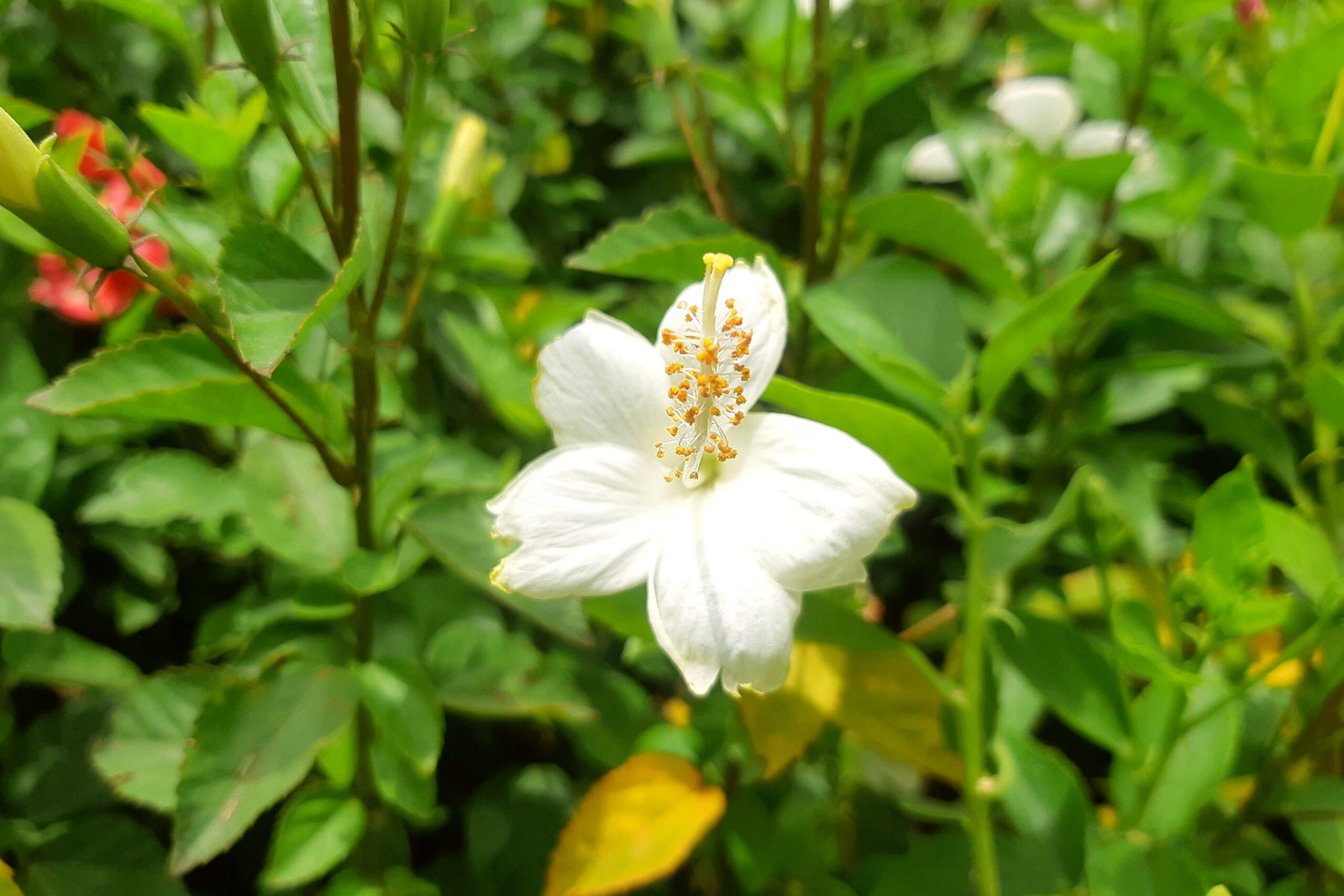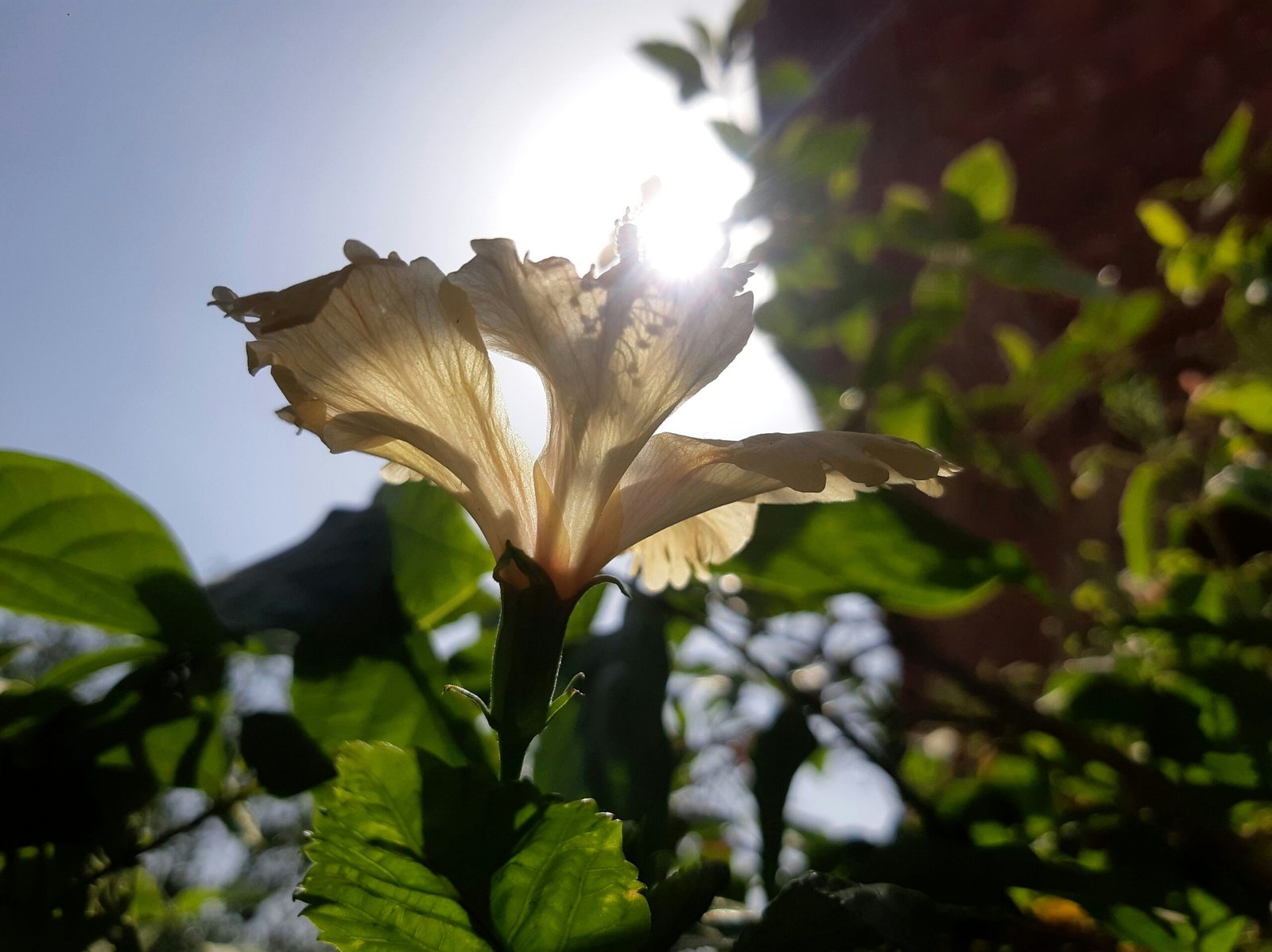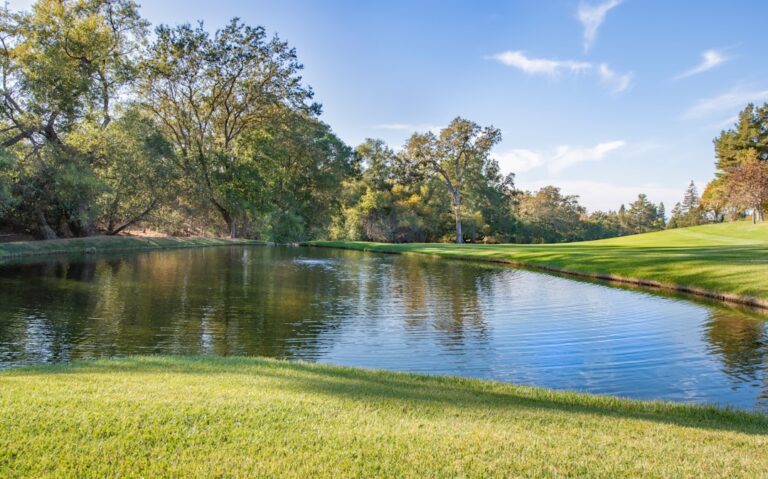“`html
Introduction to Annual Flowers
Annual flowers are a popular choice among gardeners for their vibrant colors and extended blooming periods. Unlike perennials, which return year after year, annuals complete their life cycle in one growing season. This means they germinate, flower, set seed, and die within the same year. This cycle allows gardeners to enjoy a fresh burst of color and variety in their gardens each season, without the long-term commitment that perennials require.
One of the primary benefits of planting annuals is their ability to provide continuous blooms throughout the growing season. Many annual flowers, such as marigolds, petunias, and zinnias, are known for their prolific flowering, ensuring that your garden remains colorful and lively from spring until the first frost. This makes annuals an excellent choice for those who want to create a visually appealing garden quickly and without much hassle.
In addition to their long blooming periods, annuals are also relatively easy to care for. They generally require basic gardening practices such as regular watering, occasional fertilization, and deadheading to remove spent blooms. This simplicity makes them ideal for both novice and experienced gardeners. Furthermore, annuals can be easily grown from seeds or purchased as young plants, providing flexibility in how you choose to incorporate them into your garden.
Another advantage of annual flowers is their versatility. They can be used in various garden settings, including flower beds, borders, containers, and hanging baskets. This adaptability allows gardeners to experiment with different color combinations and arrangements each year, ensuring that their garden remains dynamic and interesting. Additionally, annuals can be strategically placed to fill gaps in perennial plantings, providing a seamless and continuous display of color.
Overall, the vibrant hues, extended blooming periods, and ease of care make annual flowers a valuable addition to any garden. Whether you are looking to add a splash of color to your landscape or create a stunning floral display, annuals offer a versatile and straightforward solution.
1. Marigolds: The Golden Touch
Marigolds are a quintessential choice for gardeners aiming to infuse vibrant hues into their gardens. Known for their striking color palette, marigolds range from bright yellows to deep oranges, providing a spectrum of warm, inviting tones that can uplift any outdoor space. These annuals are versatile, fitting seamlessly into various garden settings, whether as bedding plants, border accents, or container specimens.
Their appeal extends beyond aesthetics. Marigolds are renowned for their pest-repelling properties, particularly their ability to deter nematodes and aphids, making them a natural ally for gardeners keen on maintaining a healthy garden ecosystem. This pest-repelling trait is especially beneficial when marigolds are used in vegetable gardens, where they can protect crops from harmful insects.
Caring for marigolds is straightforward, which is why they are often recommended for novice gardeners. These hardy plants thrive in well-draining soil and require full sun to produce their best blooms. Regular watering is essential, particularly during dry spells, but it’s crucial to avoid waterlogged conditions, as marigolds prefer slightly dry soil. Deadheading spent flowers will encourage continuous blooming throughout the season, ensuring the garden remains colorful and lively.
Beyond their practical benefits, marigolds are celebrated for their ease of growth. They can be started from seeds sown directly in the garden after the last frost or from nursery-bought transplants. Either method yields robust plants that quickly establish themselves and begin flowering. Their resilience and low maintenance needs make marigolds an excellent choice for gardeners of all experience levels, providing a golden touch to any garden landscape.
Petunias: Versatile and Vivid
Petunias are renowned for their versatility and vivid colors, making them a popular choice among gardeners seeking to add a splash of brightness to their outdoor spaces. These annuals come in various types, each offering unique characteristics that cater to different gardening needs and preferences.
The grandiflora petunias are notable for their large, showy blooms that can reach up to five inches in diameter. These are perfect for creating a bold statement in your garden, whether planted in the ground or in containers. Multiflora petunias, on the other hand, produce smaller but more abundant flowers, making them ideal for mass planting and providing consistent color throughout the season. The milliflora petunias are the smallest of the three, featuring petite blooms that create a delicate and charming display, perfect for borders and hanging baskets.
Petunias are available in a wide range of colors, from vibrant reds and pinks to cool blues and purples, as well as various patterns like stripes, speckles, and bi-colors. This extensive palette allows gardeners to mix and match to suit their aesthetic preferences and design goals.
These versatile annuals thrive in well-draining soil and require at least six hours of sunlight daily to flourish. Regular watering is essential, but be cautious of overwatering, as this can lead to root rot. Deadheading spent blooms encourages continuous flowering, ensuring your petunias remain vibrant and beautiful throughout the season. Fertilize every couple of weeks with a balanced, water-soluble fertilizer to support healthy growth and abundant blooms.
Whether used in hanging baskets, borders, or containers, petunias are a dynamic addition to any garden. Their resilience, combined with their extensive color range and ease of care, makes them a top choice for gardeners looking to brighten their outdoor spaces this season.
Zinnias: The Vibrant Showstoppers
Zinnias are a gardener’s delight, known for their stunning array of colors and diverse flower shapes. These annuals are available in various species, including Zinnia elegans, Zinnia angustifolia, and Zinnia haageana. Each species offers unique characteristics that contribute to their appeal. Zinnia elegans, for instance, is popular for its large, dahlia-like blooms that come in shades of red, pink, yellow, and white. Zinnia angustifolia features smaller, daisy-like flowers, while Zinnia haageana boasts a more compact form with vibrant, bicolor petals.
The bold and bright colors of zinnias make them a standout choice for any garden. Their diverse flower shapes range from single to double blooms, providing a dynamic visual interest. Gardeners particularly favor zinnias not only for their aesthetic appeal but also for their robust nature. These flowers are highly drought-tolerant, making them an excellent choice for gardens in areas with less frequent rainfall. Furthermore, zinnias are known to attract pollinators such as bees and butterflies, which helps enhance the overall health and productivity of the garden.
Caring for zinnias is relatively straightforward, making them suitable for both novice and experienced gardeners. They thrive in full sun and well-drained soil. To plant zinnias, sow the seeds directly in the garden after the last frost date, spacing them about 6 to 18 inches apart, depending on the variety. Water the plants regularly but avoid overhead watering to prevent fungal diseases. Deadheading spent blooms will encourage continuous flowering throughout the season. By following these simple care instructions, gardeners can enjoy the vibrant display of zinnias from early summer until the first frost.
Incorporating zinnias into your garden not only adds a burst of color and charm but also supports local pollinator populations. Their ease of care and remarkable resilience make them a top choice for anyone looking to brighten their garden this season.
Impatiens: The Shade Lovers
Impatiens are a popular choice for gardeners looking to add a splash of color to shaded areas. These versatile annuals thrive in low-light conditions where other plants might struggle, making them an excellent option for those tricky spots under trees or along the north side of buildings. With a vibrant color palette that includes whites, pinks, deep reds, and purples, impatiens can effortlessly brighten even the darkest corners of your garden.
One of the main advantages of impatiens is their adaptability to various shaded environments. They prefer well-drained soil rich in organic matter and require consistent moisture to maintain their lush appearance. When planting impatiens, it’s essential to space them approximately 8 to 12 inches apart, allowing enough room for air circulation and growth. This spacing helps prevent common issues like mildew and ensures that each plant receives an adequate amount of nutrients.
To keep impatiens healthy and vibrant throughout the growing season, regular maintenance is key. Watering should be done at the base of the plants to avoid wetting the foliage, which can lead to fungal problems. It’s also beneficial to apply a balanced, slow-release fertilizer at the time of planting and periodically throughout the season. Deadheading spent blooms is not necessary, as impatiens are self-cleaning and will naturally drop their old flowers, promoting continuous blooming.
In addition to their practical benefits, impatiens offer aesthetic versatility. Whether you’re aiming for a monochromatic look with a single color or a more eclectic mix, these annuals can be arranged to suit a variety of design preferences. They pair well with other shade-loving plants like hostas and ferns, creating a harmonious garden landscape that thrives in low light.
Overall, impatiens are a reliable and visually appealing choice for shaded areas, providing gardeners with a low-maintenance yet impactful solution to brighten their gardens.
5. Geraniums: The Classic Favorites
Geraniums are celebrated for their vibrant blooms and versatile foliage, making them a timeless choice for gardeners looking to add a splash of color to their landscapes. There are several types of geraniums, each with unique features that cater to different gardening needs. The most popular types include zonal, ivy, and scented geraniums.
Zonal geraniums are perhaps the most well-known, characterized by their upright growth and distinctive, banded leaves. They produce large clusters of flowers in a variety of colors, from deep reds and pinks to bright whites and purples. Ivy geraniums, on the other hand, are known for their trailing habits, making them perfect for hanging baskets and window boxes. Their glossy, ivy-like leaves and cascades of blooms create a stunning visual effect. Scented geraniums are prized not only for their flowers but also for their aromatic foliage. These geraniums release delightful fragrances when touched, ranging from minty and fruity to spicy and floral.
Geraniums are versatile plants that thrive in both garden beds and containers. They are relatively easy to care for, making them suitable for gardeners of all skill levels. When planting geraniums, ensure they receive plenty of sunlight, as they flourish in full sun to partial shade. Watering should be consistent but not excessive; allow the soil to dry out slightly between waterings to prevent root rot. Feeding geraniums with a balanced fertilizer every few weeks will promote healthy growth and abundant blooms.
To prolong their blooming period, it is essential to practice deadheading, which involves removing spent flowers. This not only encourages new growth but also keeps the plants looking tidy. Additionally, regular pruning of leggy stems helps maintain a compact and bushy appearance. With proper care, geraniums will reward you with their stunning display of colors and delightful fragrances, making them a staple in any garden.
Planting and Care Tips for Annuals
When it comes to cultivating a vibrant garden with annuals, meticulous attention to planting and care is paramount. To begin with, proper soil preparation is the foundation of a thriving garden. Annuals flourish best in well-draining soil enriched with organic matter. Before planting, incorporate compost or well-rotted manure to enhance soil fertility and structure. This not only provides essential nutrients but also improves soil aeration and water retention, creating an ideal environment for root development.
Watering schedules are another critical aspect of maintaining healthy annuals. Most annuals prefer consistent moisture, especially during their initial growth phase. It’s advisable to water deeply but less frequently, allowing the top inch of soil to dry out between watering sessions. This practice promotes deeper root growth and reduces the risk of root rot. Early morning watering is optimal as it minimizes evaporation and allows foliage to dry before evening, reducing the likelihood of fungal diseases.
Fertilization plays a significant role in the sustained growth and blooming of annuals. A balanced, slow-release fertilizer applied at planting time can provide a steady supply of nutrients throughout the growing season. Additionally, periodic feeding with a water-soluble fertilizer, every 4-6 weeks, can boost flowering and overall plant health. Be cautious not to over-fertilize, as excessive nutrients can lead to lush foliage at the expense of blooms.
Pest control is integral to maintaining the aesthetic appeal of your garden. Regularly inspect plants for signs of pests such as aphids, caterpillars, and spider mites. Natural remedies, such as neem oil or insecticidal soap, can effectively manage minor infestations. Encouraging beneficial insects like ladybugs can also provide biological control. For severe infestations, targeted chemical treatments may be necessary, but always follow label instructions carefully to avoid harming non-target organisms.
Consistent maintenance ensures that your garden remains a vibrant and inviting space throughout the season. Deadheading spent flowers encourages continuous blooming and prevents seed formation, while regular weeding minimizes competition for nutrients and water. Mulching around the base of plants helps retain soil moisture, suppress weeds, and regulate soil temperature, further promoting healthy growth.
Conclusion: Creating a Colorful Garden Oasis
The addition of annuals to your garden offers an array of benefits, bringing bursts of vibrant color and dynamic beauty to your outdoor space. By incorporating the top 5 annuals we’ve discussed, you can transform your garden into a lively and engaging environment that flourishes throughout the season. Each of these annuals—whether it’s the radiant petunias, cheerful marigolds, striking zinnias, versatile impatiens, or the elegant snapdragons—brings its unique charm and aesthetic appeal.
Experimenting with different combinations of these annuals allows you to customize and diversify your garden’s look. Mixing colors, textures, and heights can create stunning visual interest and variety. Moreover, annuals are relatively easy to grow and maintain, making them an excellent choice for both novice and experienced gardeners alike. Their ability to adapt to various conditions while delivering striking displays of color makes them invaluable additions to any garden.
We encourage you to start planning and planting your garden now. Consider the specific needs of each plant, such as sunlight, water, and soil type, to ensure they thrive in your garden. By doing so, you’ll not only enhance the beauty of your outdoor space but also enjoy the personal satisfaction and therapeutic benefits that gardening provides. Don’t hesitate to experiment with different layouts, color schemes, and combinations to find what works best for your garden’s unique environment.
Take the first step towards creating your own colorful garden oasis today. Whether you prefer bold, eye-catching displays or subtle, harmonious blends, annuals offer endless possibilities to express your creativity and enhance your garden’s appeal. Happy gardening!





















+ There are no comments
Add yours